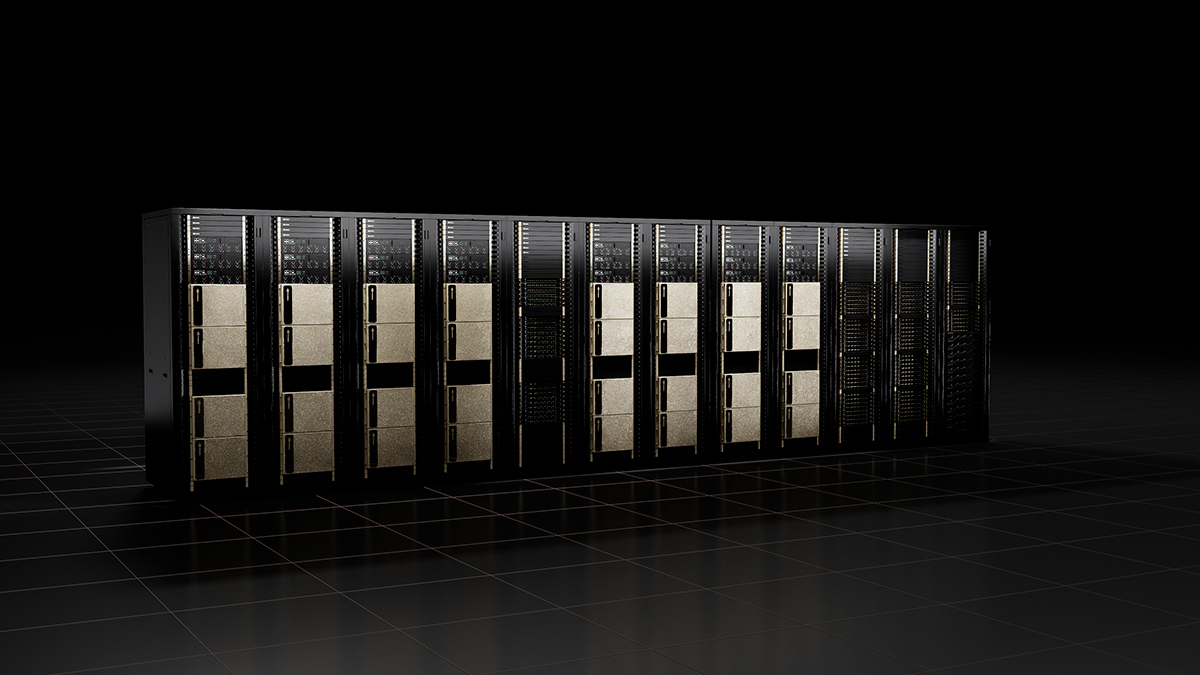MSI to unveil desktop AI supercomputer at Computex 2025, powered by Nvidia DGX
MSI is also expanding its deskstop system and unveiling a new motherboard

MSI has confirmed it will take the covers off a host of exciting new products at Computex 2025 later this month, including a brand new desktop AI supercomputer powered by Nvidia's DGX Spark platform.
The company confirmed in a press release that it will unveil its EdgeXpert MS-C931, a new desktop AI supercomputer built on the Nvidia DG Spark platform. The MS-C931 is powered by Nvidia's GB10 Grace Blackwell Superchip and is capable of 1,000 AI TOPS FP4 performance. The GB10 SoC features Nvidia Blackwell GPU architecture and fifth-generation Tensor Cores, as well as NVLink-C2C connection to Nvidia's Grace CPU, an Arm architecture core featuring 20 power-efficient chips.
It will also feature ConnectX 7 networking, 128GB unified memory, and LLM support, which Nvidia has previously promised can support up to 4TB of NVMe storage, and can run up to 200-billion-parameter LLMs, or 405-billion parameter models when running two linked chips.
Nvidia's DGX Spark platform promises compact and efficient performance, and comes pre-installed with Nvidia's AI software stack so that developers can run AI models from all the major players, including DeepSeek, Meta, and Google.
Alongside the MS-C931, MSI also says it will unveil a new lineup of Industrial Motherboards, as well as systems powered by Intel Twin Lake, Raptor Lake Refresh, Bartlett Lake, and Arrow Lake processor families.
Specifically, the company highlighted three new products. The MS-C926 is an ultra-slim fanless box PC with applications in smart retail and digital signage.
The Ms-927 is an ultra-compact box PC featuring Intel Core Ultra processors for high-performance edge computing.
Get Tom's Hardware's best news and in-depth reviews, straight to your inbox.
Finally, the MS-CF20 is a new next-generation ATX motherboard featuring 16th Gen Intel Arrow Lake-S processors.
MSI says it will also have live demonstrations for solutions for smart retail and digital signage. There will also be a new fanless palm box for "space-constrained industrial environments, remote control management solutions utilizing SysLink, and edge AI innovations, including LLM and chatbot applications enabled by AI smartLink software.
Follow Tom's Hardware on Google News to get our up-to-date news, analysis, and reviews in your feeds. Make sure to click the Follow button.

Stephen is Tom's Hardware's News Editor with almost a decade of industry experience covering technology, having worked at TechRadar, iMore, and even Apple over the years. He has covered the world of consumer tech from nearly every angle, including supply chain rumors, patents, and litigation, and more. When he's not at work, he loves reading about history and playing video games.
-
DS426 Because it has an nVidia "superchip," that makes this a desktop "supercomputer?" Wow, no wonder nVidia is always winning the mindshare race.Reply
Kind of a slap in the face to true supercomuting IMO. This is an "AI workstation." -
bit_user By definition, nothing you can fit on a desktop qualifies as a supercomputer. When you quote Nvidia's claims to that effect, you need to put the word in quotes.Reply
This is not even as fast as a RTX 5090. So, by that definition, we already have desktop supercomputers!The article said:The MS-C931 is powered by Nvidia's GB10 Grace Blackwell Superchip and is capable of 1,000 AI TOPS FP4 performance.
The only advantage it has is more RAM than any single GPU and higher bandwidth than non-server/workstation CPUs. Still, with only 128 GB and the AI model having to share that with the OS and everything else, you're probably not far off from that amount with a 96 GB card, like the RTX Pro 6000 Blackwell. Sure, there's a bit of a price-disparity, but the dGPU is also faster. -
Rob1C Should be called a hand-held supercomputer, because it fits in your hand. While at the same time, it shouldn't be called a supercomputer because it fits in your hand; well, at least not for another 50 years or so.Reply
Not much different from the ASUS version shown with a great image of the motherboard. -
sseemaku So after 'AI PC's we have desktop super computers now! I guess next we will see quantum computer PCs.Reply -
bit_user Reply
Well, it fits into a long pattern of Nvidia trying to play up their embedded SoC's as "supercomputers":sseemaku said:So after 'AI PC's we have desktop super computers now!
https://www.nvidia.com/en-us/autonomous-machines/embedded-systems/jetson-xavier-nx/
https://blogs.nvidia.com/blog/jetson-generative-ai-supercomputer/
Someone in their marketing department must be incredibly lazy or stuck in a time warp, back 2-3 decades, in order to think of these tiny things as supercomputers. -
bit_user Reply
RTX 4000 didn't do fp4 - that was one of the few new capabilities introduced in the RTX 5000 generation.kealii123 said:isn't 1,000 TOPS at FP4 only about as strong as a 4060ti?
The RTX 5070 has a sparse fp4 rate of 998 TOPS. So, that's probably the equivalent of what they're measuring in the GB102 - because Nvidia always headlines the biggest number possible. If you want dense TOPS, the RTX 5080 hits 900 and the RTX 5090 hits 1676.